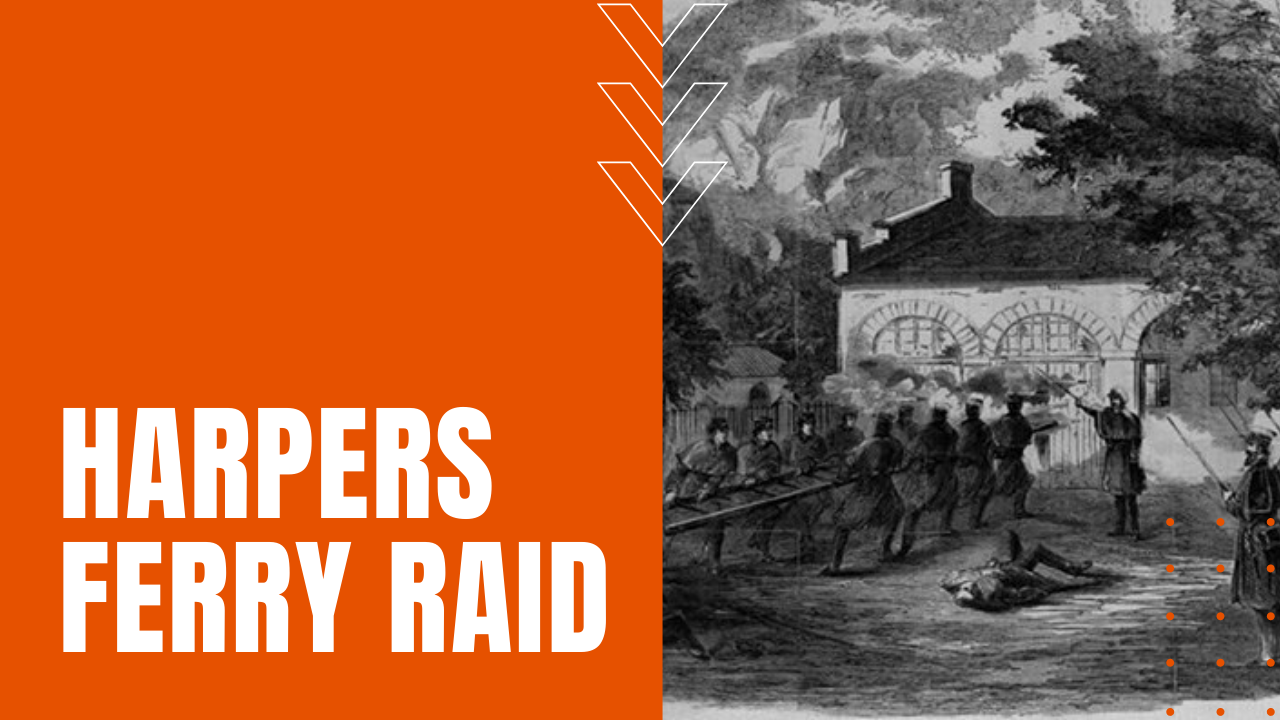John Brown’s Raid on Harpers Ferry

Driven by a sense of godly righteousness, abolitionist John Brown believed in aggressive activism against slaveholders and any government official who supported the institution of slavery. So violent were his interactions with slaveholders that by age 42 he had 20 lawsuits filed against him, which ultimately drove him into personal bankruptcy.
Bleeding Kansas and Brown’s Plan of Attack
After participating in the violent deaths of five pro-slavery settlers at Pottawatomie, Kansas, in 1859, Brown settled on a plan to attack and take hostage not only slaveholders, but the United States military armory at Harpers Ferry, in what is now West Virginia.
Brown recruited 22 men, including his grown sons Owen and Watson, providing military training in advance of their raid. On October 16th, 1859, after capturing slaveholder Lewis Washington—a great grandnephew of George Washington—Brown and his men stopped a Baltimore & Ohio Railroad train bound for Washington, D.C., sparking the first fatality when a freed black porter at a local train station was shot in the back after refusing to comply with the raider’s orders.
Harpers Ferry Raid
After slaveholders began to fight back against the capture and mistreatment of their pro-slavery brethren, on October 17th, Brown and his men overtook the Harpers Ferry armory, loading up on ammunition and weaponry in a move to further strengthen their violent anti-slavery opposition. A local militia and men from the Baltimore & Ohio Railroad soon surrounded the facility, exchanging gunfire with Brown’s men, which led to fatalities on both side.
Eight railroad men were killed, along with four others in the militia, including a local mayor. Helplessly trapped, Brown sent his son Watson out to surrender, however, the younger Brown was quickly shot dead by the militia. After news of the armory takeover reached Washington that same day, President James Buchanan sent in a company of 88 Marines led by future Confederate General Robert E. Lee to end the standoff.
On October 18th, after Brown refused to surrender, the Marines stormed the compound, killing 11 belligerents, including both of Brown’s sons. After freeing the hostages, Brown was sent to nearby Charles Town, where he was imprisoned and later found guilty of treason against the Commonwealth of Virginia.
Brown was hanged on December 2nd, 1859, where his execution was witnessed by pro-slavery actor, activist and future presidential assassin, John Wilkes Booth.
